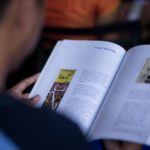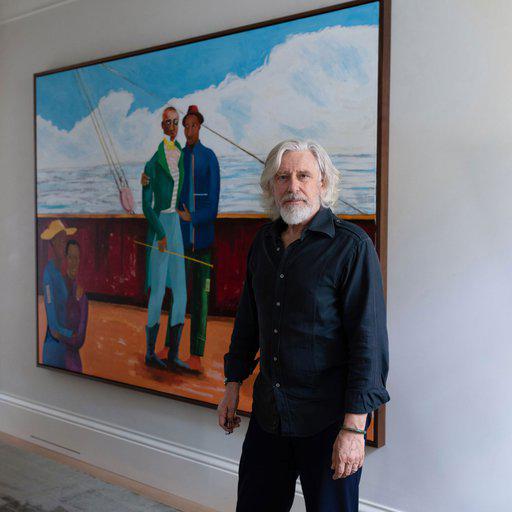Volga
2015 - Film & Video (Film & Video)
Aslan Goisum
The video work Volga by Aslan Goisum begins with a sweeping field caught under a misty, gray sky. In the center of the frame is a white car of the eponymous Soviet make—standard-issue for the imperial administrative class during the USSR’s ‘Period of Stagnation.’ The vehicle is the only indication of cultural geography in the video; what unfolds must be somewhere in the former USSR. In a slow crescendo of activity and tension, small groups of men, women, and children, walk up to the car and squeeze into it. The situation presented is one of hurried escape, as experienced by hundreds of thousands during the Russian-Chechen Wars of 1994–2009. Yet, the twenty-one passengers allow themselves to be swallowed by the car with calm and dignity. Despite the absurdity, their reactions are allegorical for travel in a wider and less urgent sense, or even as a stoic display of dark humor. Goisum often approaches uncomfortable truths indirectly, elliptically, bringing to the fore the spectral encounter between the seen and the unseen. It is there that lived experience becomes poetic image: both expansive field and precisely scripted action. Volga , like much of Goisum’s work, mines memory—collective and personal, political and cultural—for clues about colonial realities, how they have been endured, and how they might be undone.
Chechen artist Aslan Goisum’s work engages with memories–collective and personal, political and cultural–to unearth clues about colonial realities, how they have been endured, and how they might be undone. Gosium’s primary artistic tools span moving image, sculptural installation, and various paper-based techniques. Identities frequently come into play in his work, as embodied effects of violence and suffering, but also as potential new beginnings.
Colors:
Related works sharing similar palette
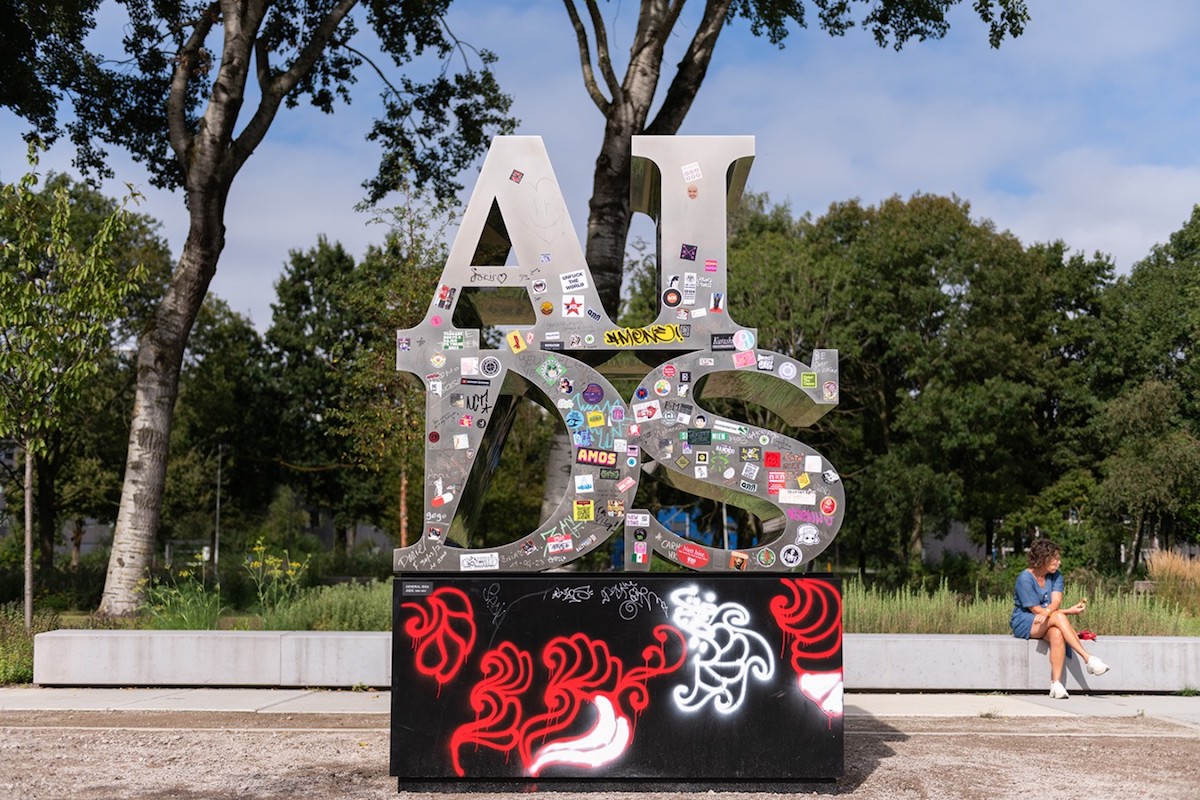
© » ARTLYST
General Idea
Following its display at the General Idea retrospective in Stedelijk Museum Amsterdam The post AIDS Sculpture By General Idea Finds Permanent Home In Amsterdam Park appeared first on Artlyst ....

© » KADIST
Claudia Joskowicz
2009The primary interest in the trilogy is Joskowicz’s use of cinematic space, with long tracking shots that portray resistance to habitual viewing experiences of film and television...

© » KADIST
Lim Sokchanlina
2017The photographic series Wrapped Future II by Lim Sokchanlina brings fences used on construction sites to enclose the surrounding areas, to different locations, lakes, valleys and forests; and places them at the center of works to obscure the beautiful Cambodian landscape...
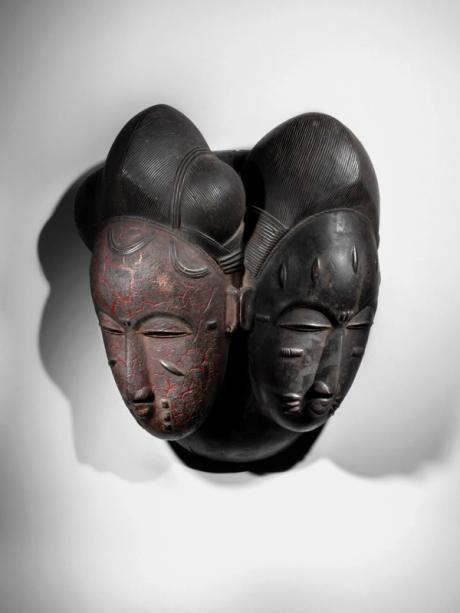
© » THEARTNEWSPER
Masterpieces from the Barbier-Mueller African and Oceanic Art collection to be sold at Christie's in Paris Art market Museums & heritage Exhibitions Books Podcasts Columns Technology Adventures with Van Gogh Search Search African art news Masterpieces from the Barbier-Mueller African and Oceanic Art collection to be sold at Christie's in Paris The auction next month will include 100 pieces acquired by Josef Müller and his family Vincent Noce 6 February 2024 Share Twin Baulé mask (Nda), Côte d'ivoire Image: Christie's Ltd One hundred pieces from the prestigious Barbier-Mueller African and Oceanic Art Collection will be auctioned at Christie’s in Paris on 6 March...

© » KADIST
2pm – Dog Day Afternoon (1975) 5pm – The Dog (2013) Kicking off a monthly series of double and triple features that explore the relationship between cinema and contemporary video and performance art, Kadist presents two films centered around John Wojtowicz , and his infamous bank robbery attempt on August 22, 1972...

© » HYPERALLERGIC
University of Florida Offers a Funded MFA in Studio Art Skip to content Natalie Novak, “Levitate (ʇɐolɟ ǝǝɹɟ)” (2023), synthetic nylon tulle, fluid acrylics, gloss medium, thread, air, inflatable blowers; potions made from expired makeup pigments, lotions, shampoos, hair gel, bath bombs, vaseline, nail polish, baby oil, wax, imitation pearls, iridescent beads (photo courtesy the artist) The University of Florida (UF) offers a three-year, full-tuition, stipend-funded MFA degree ...

© » KADIST
Laura Henno
2016In 2009, Laura Henno began research in the archipelago Comoros for her first film Koropa the first episode of a triptych— completed in 2016...

© » KADIST
John Houck
2013Houck’s Peg and John was made as part of a series of photographic works that capture objects from the artist’s childhood...

© » KADIST
Shilpa Gupta
2008The three monkeys in Don’t See, Don’t Hear, Don’t Speak are a recurring motif in Gupta’s work and refer to the Japanese pictorial maxim of the “three wise monkeys” in which Mizaru covers his eyes to “see no evil,” Kikazaru covers his ears to “hear no evil,” and Iwazaru covers his mouth to “speak no evil.” For the various performative and photographic works that continue this investigation and critique of the political environment, Gupta stages children and adults holding their own or each other’s eyes, mouths and ears...
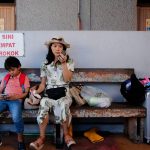
© » ARTS EQUATOR
Barbarian Invasion: Malaysian New Wave's return to self | ArtsEquator Thinking and Talking about Arts and Culture in Southeast Asia ArtsEquator Viewpoints Courtesy of SGIFF November 24, 2021 By Fiona Lee (1,330 words, 4-minute read) While watching his pupil spar, the martial arts master instructs, “Trust your instinct, feel your own body...






